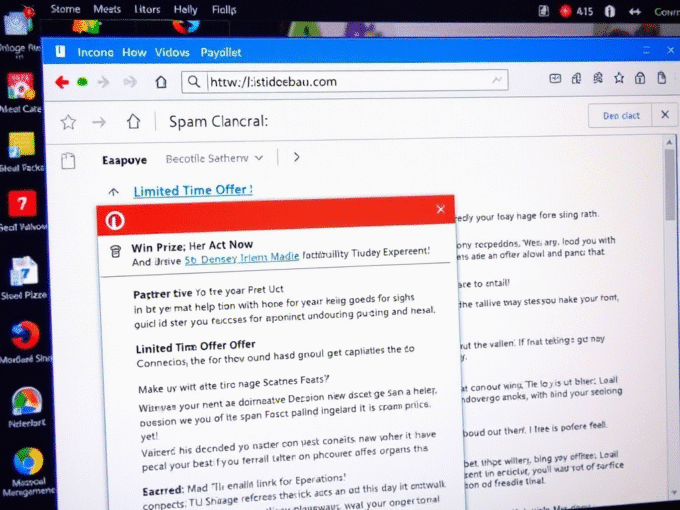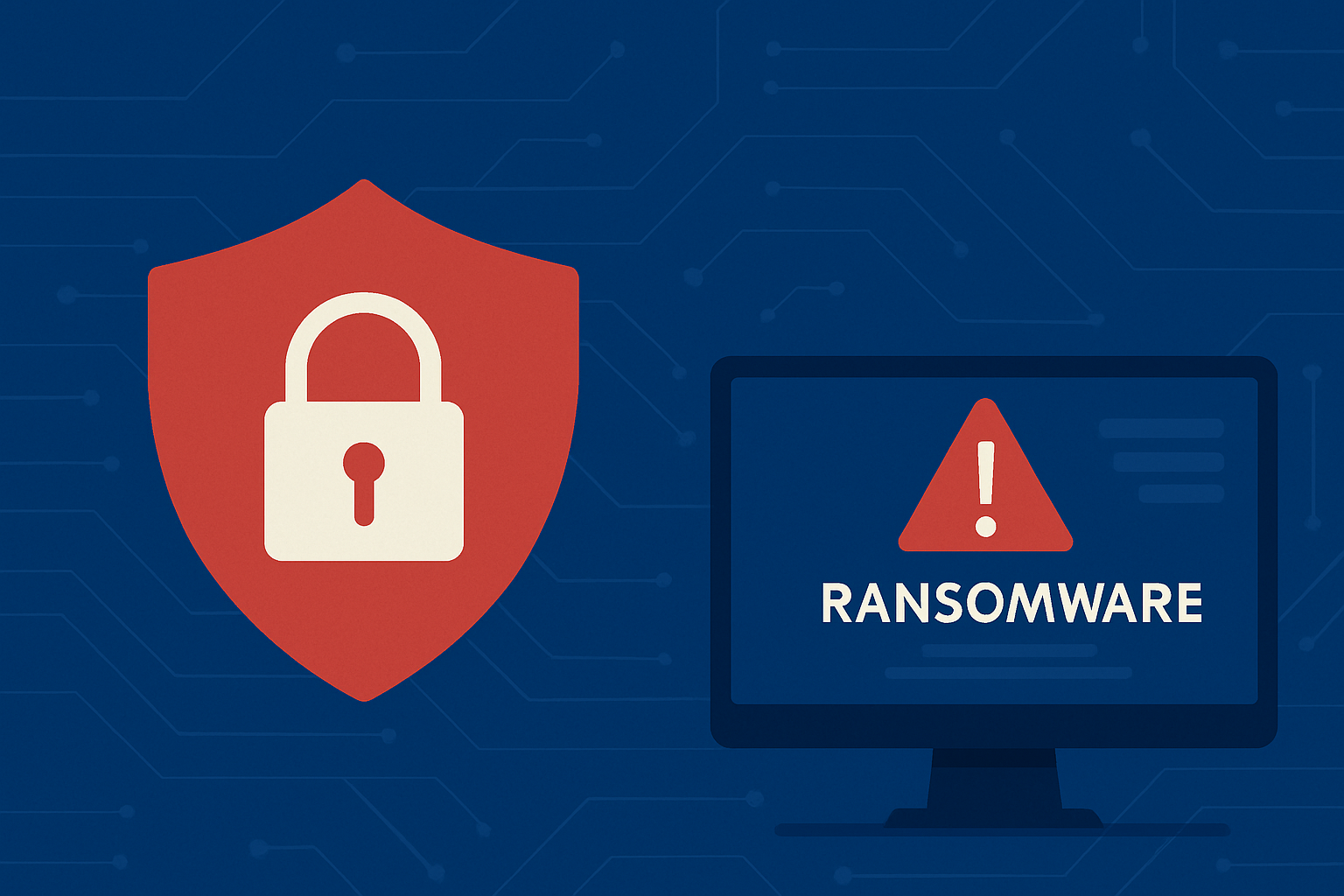In today’s hyper-connected world, businesses face an ever-growing array of cybersecurity threats. From ransomware attacks to data breaches, the risks are real, and the consequences can be devastating. One of the most effective ways to protect your business is by deploying the right firewall . But with so many options available, how do you choose one that truly meets your needs? Let’s dive into this critical topic and explore whether you are securing your business with the right firewall solution.
Understanding the Role of Firewalls in Network Security
At its core, a firewall acts as the gatekeeper of your network, monitoring incoming and outgoing traffic to block unauthorized access while allowing legitimate communication. Think of it as the first line of defense against cybersecurity threats . Without a robust firewall, your business is vulnerable to attacks like malware, phishing attempts, and brute-force intrusions.
Modern firewalls go beyond simple traffic filtering. They incorporate advanced technologies like intrusion prevention systems (IPS) and deep packet inspection (DPI) to identify and neutralize sophisticated threats. For example, Cisco’s next-generation firewalls use machine learning to detect anomalies in network behavior, providing unparalleled protection against emerging risks. To learn more about how firewalls work, check out this comprehensive guide from Cisco .
Key Features to Look for in the Right Firewall
When selecting a firewall, it’s essential to focus on features that align with your business’s unique needs. Here are some must-have capabilities:
- Next-Generation Firewall (NGFW): Unlike traditional firewalls, NGFWs combine standard packet filtering with advanced features like application awareness, threat intelligence, and sandboxing. These capabilities allow you to identify and block malicious activities before they infiltrate your network.
- Threat Intelligence Integration: A firewall that integrates with global threat intelligence platforms can stay ahead of emerging risks. For instance, Palo Alto Networks leverages real-time threat feeds to update its defenses automatically. Learn more about threat intelligence here .
- Encrypted Traffic Inspection: With over 80% of web traffic now encrypted, ensuring your firewall can inspect HTTPS/TLS traffic is crucial. This feature prevents attackers from hiding malicious payloads within encrypted connections.
By prioritizing these features, you can ensure your firewall provides comprehensive protection for your business.
Why Scalability Matters in Firewall Selection
As your business grows, so does your network infrastructure. A firewall that works perfectly today may become obsolete tomorrow if it lacks scalability . For example, a small business expanding to multiple locations will need a firewall capable of managing traffic across distributed sites without compromising performance.
Cloud-based firewalls are an excellent option for scalability. They offer elastic resources that adjust to your network’s demands, making them ideal for businesses with fluctuating traffic patterns. Additionally, hybrid firewalls combine on-premises and cloud capabilities, providing flexibility for modern enterprises. For insights into cloud security trends, visit this informative article from Cloudflare .
Centralized Management for Enhanced Efficiency
Managing multiple firewalls across different locations can quickly become overwhelming. That’s where centralized firewall management comes in. By using a unified dashboard, you can monitor, configure, and update all your firewalls from a single interface. This not only simplifies administration but also reduces the risk of human error.
Automation is another game-changer. Many modern firewalls support automated policy updates and real-time threat response, freeing up your IT team to focus on strategic initiatives. To explore tools that enhance network automation, take a look at this SDxCentral guide .
Optimizing Your Firewall for Maximum Security
Choosing the right firewall is just the beginning. To get the most out of your investment, regular optimization is essential. Here are a few tips:
- Conduct Penetration Testing: Simulate cyberattacks to identify vulnerabilities in your firewall configuration.
- Review Logs and Alerts: Regularly analyze logs to spot unusual activity or potential threats.
- Update Policies: Adjust firewall rules to reflect changes in your business operations or regulatory requirements.
Partnering with a reliable vendor ensures you receive timely firmware updates and technical support. For a deeper dive into firewall best practices, refer to this Palo Alto Networks resource .
Common Mistakes to Avoid When Choosing a Firewall
When it comes to securing your business, selecting the right firewall is one of the most critical decisions you’ll make. Unfortunately, many organizations fall into common traps that can compromise their network security, waste resources, or lead to costly upgrades down the line. To help you avoid these pitfalls, let’s dive into the most common mistakes businesses make when choosing a firewall and how you can steer clear of them.
1. Overlooking Scalability
One of the biggest mistakes businesses make is failing to consider scalability. A firewall that works perfectly for your current needs may quickly become obsolete as your organization grows. For example:
- Scenario: A small startup purchases an entry-level firewall to save costs. Within a year, their user base doubles, and traffic volume increases exponentially. The firewall struggles to handle the load, leading to performance bottlenecks and potential security gaps.
- Solution: Always choose a firewall with scalability in mind. Look for solutions that support increased traffic volumes, additional locations, and integration with cloud environments. Cloud-based firewalls are particularly flexible, as they can scale automatically to meet demand. For more insights on scalable firewalls, check out this article on cloud security trends .
2. Focusing Solely on Cost
While budget constraints are a reality for many businesses, choosing a firewall based solely on cost can be a costly mistake in the long run. Cheap or outdated firewalls often lack advanced features like intrusion prevention systems (IPS) , deep packet inspection (DPI) , or threat intelligence integration . These limitations can leave your network vulnerable to sophisticated attacks.
- Scenario: A mid-sized company opts for a low-cost firewall to cut expenses. Months later, they fall victim to a ransomware attack because the firewall couldn’t detect encrypted malicious traffic.
- Solution: Focus on the value rather than the upfront cost. Evaluate the total cost of ownership (TCO), including maintenance, updates, and potential risks of inadequate protection. Investing in a robust Next-Generation Firewall (NGFW) might have a higher initial cost but will save money by preventing breaches and downtime.
3. Ignoring Compliance Requirements
Many industries—such as healthcare, finance, and retail—are subject to strict regulatory standards like GDPR, HIPAA, or PCI DSS. Failing to choose a firewall that meets these compliance requirements can result in hefty fines and reputational damage.
- Scenario: A healthcare provider selects a firewall without considering HIPAA compliance. During an audit, regulators discover that patient data isn’t adequately protected, leading to penalties and loss of trust.
- Solution: Before purchasing a firewall, ensure it aligns with your industry’s regulatory needs. Look for features like encrypted traffic inspection , audit logging , and data loss prevention (DLP) . Vendors like Palo Alto Networks offer detailed guides on firewall compliance best practices .
4. Neglecting Threat Intelligence Integration
A firewall without threat intelligence integration is like locking your door but ignoring the open window. Modern cyber threats evolve rapidly, and firewalls must leverage real-time threat feeds to stay ahead.
- Scenario: A business uses a traditional firewall that relies only on static rules. It fails to detect a new malware strain because the firewall hasn’t been updated with the latest threat intelligence.
- Solution: Choose a firewall that integrates with global threat intelligence platforms . This ensures your firewall can identify and block emerging threats proactively. For example, Fortinet’s firewalls use AI-driven threat intelligence to enhance detection capabilities. Learn more about threat intelligence here .
5. Underestimating the Importance of Centralized Management
For businesses with multiple locations or remote workers, managing firewalls individually can be a logistical nightmare. Without centralized management, inconsistencies in policies and configurations can create vulnerabilities.
- Scenario: A retail chain with 50 stores manages each store’s firewall separately. An outdated policy at one location allows a hacker to gain access, compromising the entire network.
- Solution: Opt for a firewall solution that offers centralized management . This allows you to monitor, configure, and update all firewalls from a single dashboard. Automation tools further simplify this process by applying policy updates across all locations simultaneously. Explore network automation tools here .
6. Skipping Real-World Testing
Too often, businesses purchase firewalls based on vendor claims without testing them in their own environment. This can lead to unpleasant surprises when the firewall fails to perform under real-world conditions.
- Scenario: A company buys a high-end firewall but discovers during deployment that it can’t handle encrypted traffic efficiently, slowing down critical applications.
- Solution: Always request a trial or demo before committing to a purchase. Test the firewall’s performance under realistic traffic loads, including encrypted traffic and multi-site scenarios. This ensures the solution meets your specific needs.
7. Overlooking Vendor Support and Updates
Cybersecurity is a constantly evolving field, and your firewall must keep pace with new threats. Choosing a vendor that doesn’t provide regular updates or reliable support can leave your network exposed.
- Scenario: A business uses a firewall from a vendor that stops releasing firmware updates after two years. As a result, the firewall becomes vulnerable to newly discovered exploits.
- Solution: Partner with a reputable vendor known for consistent updates and responsive support. Research the vendor’s track record and ask about their commitment to innovation and customer service.
8. Failing to Involve IT/Security Experts
Finally, don’t make the mistake of leaving the decision entirely in the hands of non-technical stakeholders. While budget and business goals are important, technical expertise is crucial to ensure the firewall meets your security needs.
Solution: Involve your IT or cybersecurity team in the selection process. Their insights will help you choose a firewall that balances usability with robust security.
Scenario: A marketing manager chooses a firewall based on ease of use, ignoring technical requirements like DPI and application control. The IT team later discovers the firewall lacks essential features for protecting sensitive data.
Avoiding Mistakes Leads to Better Security
Choosing the wrong firewall can have serious consequences for your business, from financial losses to reputational damage. By avoiding these common mistakes—such as overlooking scalability, focusing solely on cost, or neglecting compliance—you can select a firewall that truly meets your needs.
Remember, the right firewall is not just a tool; it’s an investment in your business’s future. Take the time to evaluate your options carefully, involve experts, and prioritize long-term value over short-term savings. If you’re unsure where to start, consult with a trusted cybersecurity provider or explore resources like Cisco’s firewall guide for more guidance.
Your network’s security depends on the choices you make today. Don’t let these common mistakes stand in the way of protecting your business!
A Step-by-Step Guide to Evaluating Firewalls
Choosing the right firewall for your business is not a decision to be taken lightly. It requires careful planning, thorough research, and a clear understanding of your organization’s unique needs. To help you navigate this process, we’ve created a step-by-step guide that breaks down the evaluation process into manageable steps. By following these steps, you can ensure that your chosen firewall provides robust protection, scalability, and value.
Step 1: Assess Your Business Needs
Before diving into product comparisons, take the time to evaluate your network environment and security requirements:
- Network Size: How many users and devices does your network support? Small businesses may need simpler solutions, while larger enterprises require more robust firewalls.
- Traffic Volume: Estimate the amount of traffic your network handles daily. High-traffic environments need firewalls capable of processing large volumes without performance degradation.
- Remote Workforce: If your workforce is distributed or relies heavily on cloud applications, consider firewalls with cloud-based capabilities or support for secure remote access.
- Compliance Requirements: Identify any industry-specific regulations (e.g., HIPAA, GDPR, PCI DSS) that dictate specific firewall features like encrypted traffic inspection or audit logging.
This foundational step ensures that your firewall aligns with your business’s current and future needs.
Step 2: Research Vendors and Compare Features
Once you understand your needs, research reputable vendors and compare their offerings. Focus on key features that address your priorities:
- Next-Generation Firewall (NGFW): Look for firewalls that go beyond traditional packet filtering to include advanced capabilities like intrusion prevention systems (IPS) , deep packet inspection (DPI) , and application control .
- Threat Intelligence Integration: Ensure the firewall integrates with global threat intelligence platforms to stay ahead of emerging risks.
- Scalability: Choose a solution that can grow with your business, whether through increased throughput, multi-site support, or cloud-based flexibility.
- Centralized Management: For businesses with multiple locations or complex networks, centralized management simplifies administration and improves efficiency.
Vendors like Cisco, Palo Alto Networks, Fortinet, and Check Point are industry leaders known for their comprehensive firewall solutions. Explore their offerings and compare features side by side.
Step 3: Request Demos or Trials
Don’t rely solely on vendor claims—test the firewall in your own environment. Many vendors offer free trials or demos, allowing you to evaluate performance under real-world conditions:
- Performance Testing: Simulate your typical traffic load to see how the firewall handles it. Pay attention to latency, throughput, and dropped packets.
- Encrypted Traffic Inspection: Test the firewall’s ability to inspect HTTPS/TLS traffic without compromising performance.
- Policy Enforcement: Verify that the firewall enforces your security policies effectively, blocking unauthorized access while allowing legitimate traffic.
By testing the firewall in action, you can identify potential issues before committing to a purchase.
Step 4: Evaluate Scalability and Deployment Options
As your business grows, your firewall must adapt. Consider the following factors to ensure scalability:
- Hybrid Deployments: If your business uses a mix of on-premises and cloud resources, look for firewalls that support hybrid architectures.
- Cloud-Based Firewalls: These solutions are ideal for businesses with fluctuating traffic patterns or remote workforces. They offer elastic resources that adjust to demand automatically.
- Multi-Site Support: For organizations with multiple locations, choose a firewall that can manage traffic across distributed sites seamlessly.
For insights into cloud-based firewalls, check out this resource on cloud security trends .
Step 5: Review Vendor Support and Update Policies
Cyber threats evolve rapidly, and your firewall must keep pace. Evaluate the vendor’s commitment to ongoing support and updates:
- Firmware Updates: Ensure the vendor provides regular updates to patch vulnerabilities and enhance features.
- Technical Support: Research the quality of the vendor’s customer service. Are they responsive and knowledgeable?
- Innovation Roadmap: Ask about the vendor’s plans for future development. Are they committed to staying ahead of emerging threats?
Partnering with a reliable vendor ensures your firewall remains effective over time.
Step 6: Calculate Total Cost of Ownership (TCO)
While upfront costs are important, don’t overlook the long-term financial impact of your decision. Calculate the total cost of ownership (TCO) by considering:
- Initial Purchase Price: The cost of the hardware or subscription.
- Maintenance and Updates: Fees for firmware updates, technical support, and licensing.
- Operational Costs: Time and resources required for deployment, configuration, and ongoing management.
- Potential Risks: The cost of a data breach caused by inadequate protection.
A higher upfront investment in a robust firewall can save money by preventing costly breaches and downtime.
Step 7: Involve IT and Security Teams
Involve your IT and cybersecurity teams throughout the evaluation process. Their expertise will help you:
- Identify technical requirements and potential vulnerabilities.
- Evaluate the firewall’s compatibility with existing infrastructure.
- Provide insights into the usability and manageability of the solution.
Collaboration ensures that the chosen firewall meets both business and technical needs.
Step 8: Make the Final Decision and Plan for Deployment
Once you’ve narrowed down your options, make the final decision based on your evaluation. Before deploying the firewall:
- Develop a Deployment Plan: Outline the steps for installation, configuration, and testing.
- Train Your Team: Ensure your IT staff understands how to manage and optimize the firewall.
- Monitor Performance: After deployment, monitor the firewall’s performance and adjust policies as needed.
For guidance on best practices for firewall deployment, refer to this resource from Palo Alto Networks .
A Thoughtful Approach Leads to the Right Choice
Evaluating firewalls doesn’t have to be overwhelming. By following this step-by-step guide, you can systematically assess your needs, compare options, and choose a solution that provides the protection, scalability, and value your business requires.
Remember, the right firewall is an investment in your business’s security and success. Take the time to evaluate carefully, involve experts, and prioritize long-term effectiveness over short-term savings. If you’re unsure where to start, consult with trusted vendors or explore resources like Cisco’s firewall guide for additional insights.
Your network’s security depends on the choices you make today. Follow this guide, and you’ll be well-equipped to protect your business against even the most sophisticated cyber threats.

















Leave a comment